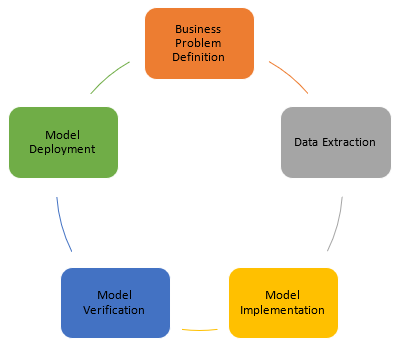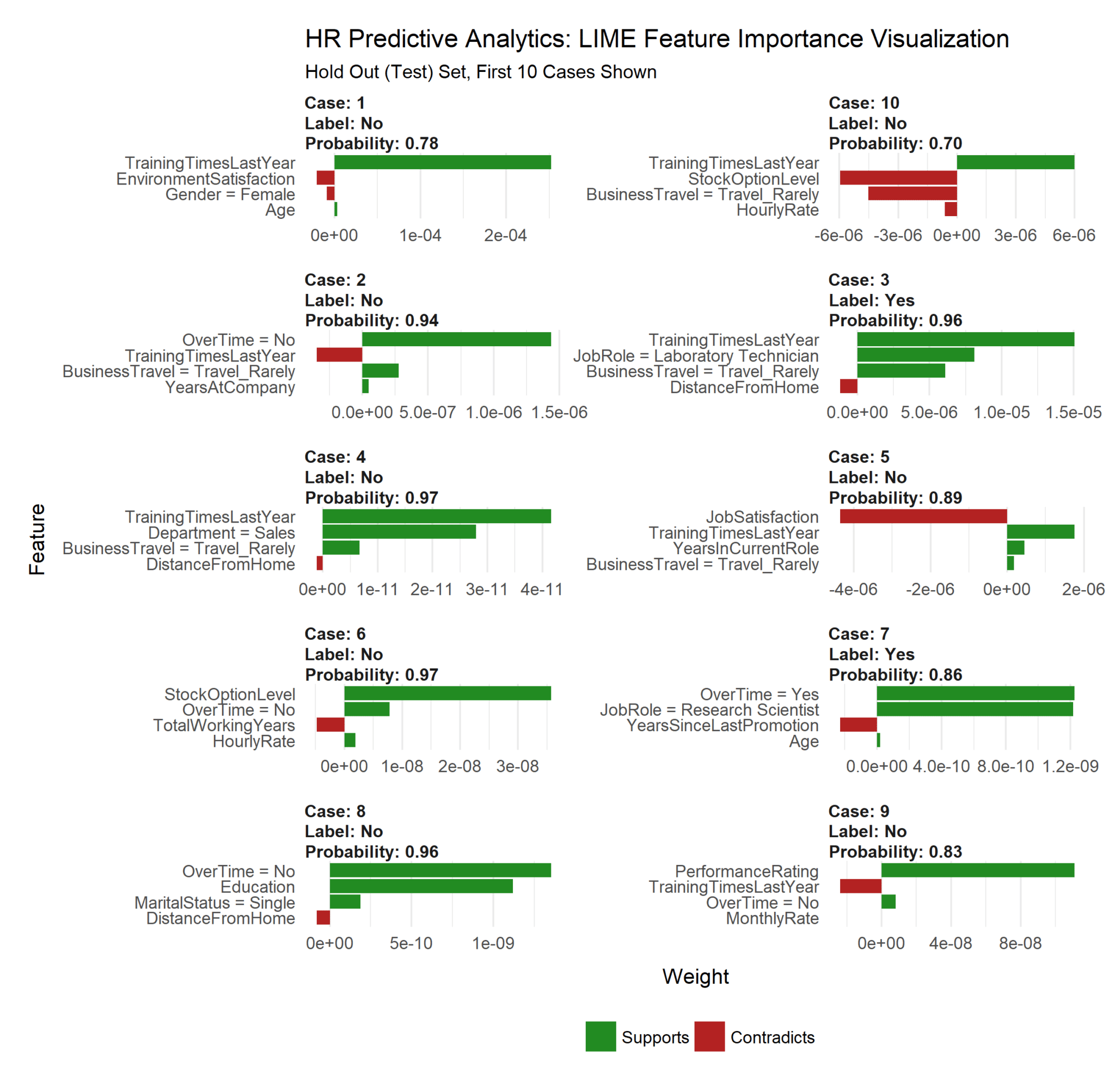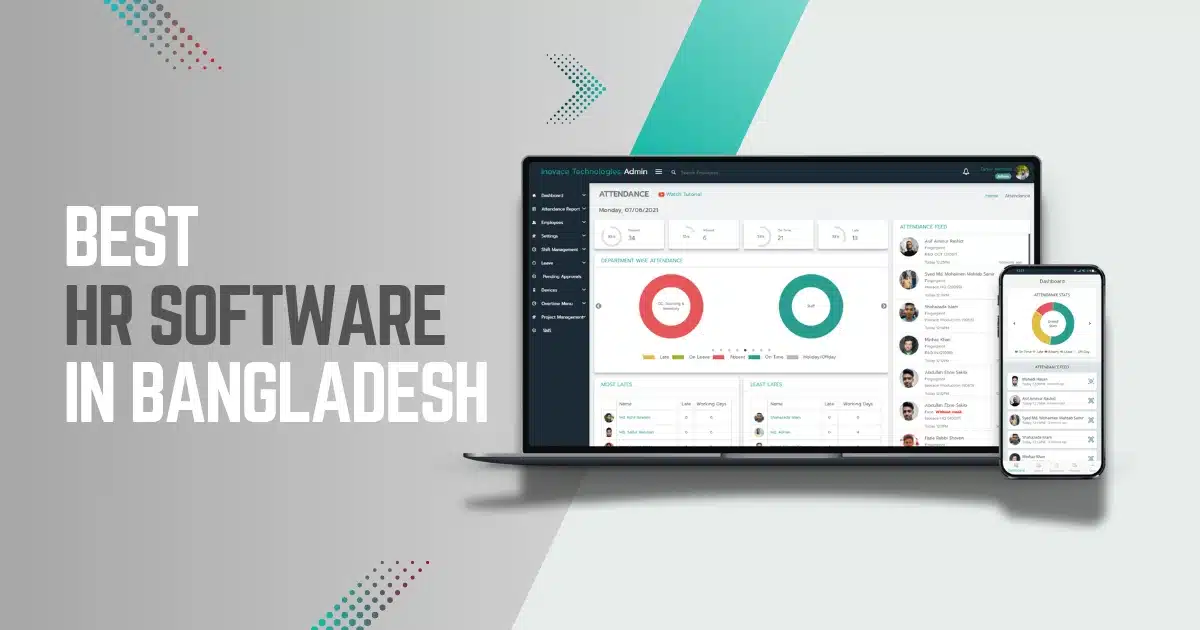Predictive attrition modeling helps companies understand why employees leave. This knowledge is crucial for reducing turnover and improving workplace satisfaction.
In today’s digital age, managing human resources has evolved. Cloud HR platforms offer advanced tools to analyze employee behavior. Predictive attrition modeling is one such tool. It uses data to predict which employees might leave. This allows companies to take action before it’s too late.
Understanding the factors behind attrition can save time, money, and effort. It helps in creating a better work environment. By leveraging cloud-based solutions, companies can make more informed decisions. This blog will explore how predictive attrition modeling works and its benefits for businesses.

Credit: codingsight.com
Introduction To Predictive Attrition Modeling
Predictive attrition modeling helps companies foresee which employees might leave. This method uses data, algorithms, and statistics. It helps Human Resource (HR) departments to understand patterns and predict future behavior. By doing this, companies can take steps to keep their valuable employees.
Importance Of Employee Retention
Employee retention is crucial for any business. Keeping skilled employees saves time and money. Training new staff can be costly and time-consuming. High turnover rates affect company morale. Retaining employees ensures stability and maintains productivity.
- Saves recruitment costs
- Maintains productivity levels
- Boosts company morale
- Ensures stability
Role Of Cloud Hr Platforms
Cloud HR platforms play a key role in predictive attrition modeling. They store and manage vast amounts of employee data. This data includes performance reviews, attendance records, and feedback. Using this data, predictive models can identify trends and patterns.
| Feature | Benefit |
|---|---|
| Data Storage | Centralized and secure employee information |
| Analytics Tools | Insightful reports and predictions |
| User-Friendly Interface | Easy to navigate and use |
Cloud HR platforms also offer tools for real-time analytics. They can provide insights into employee satisfaction and engagement. This helps HR teams to act quickly and effectively. Predictive attrition modeling thus becomes more accurate and useful with cloud HR platforms.

Credit: appinventiv.com
Key Components Of Predictive Attrition Models
Predictive attrition models play a crucial role in cloud HR platforms. They help companies foresee which employees might leave. Knowing this helps in retaining valuable staff. Understanding the key components of these models is essential.
Data Collection And Integration
Data collection is the first step. HR platforms gather data from various sources. This includes employee performance, attendance records, and feedback. Combining this data gives a complete picture. Integration of data ensures accuracy. This step is vital for building a reliable model.
Machine Learning Algorithms
Machine learning algorithms analyze the data collected. They identify patterns and trends. These algorithms predict the likelihood of an employee leaving. The more data they analyze, the more accurate they become. Different algorithms can be used. Choosing the right one is key to effective prediction.
Benefits Of Predictive Attrition Modeling
Predictive attrition modeling is a powerful tool for HR departments in cloud-based platforms. It helps in identifying employees who might leave their jobs soon. Knowing this in advance offers multiple advantages that can enhance overall organizational health.
Proactive Retention Strategies
Predictive attrition modeling allows HR teams to develop proactive retention strategies. By identifying potential leavers, HR can take timely actions. For example, they can offer additional training, career development opportunities, or even salary adjustments. These steps can significantly reduce turnover rates.
Another advantage is the ability to tailor retention efforts. Different employees have different needs. Some may value work-life balance, while others may seek career advancement. Predictive models help HR understand these needs better and customize their approach. This leads to more effective retention strategies.
Improved Employee Satisfaction
When employees feel valued, their satisfaction levels increase. Predictive attrition modeling helps HR teams identify employees who may feel disengaged or undervalued. Addressing these issues early can lead to improved employee satisfaction.
Moreover, predictive modeling can highlight areas that need improvement. For instance, if a department shows high attrition risk, HR can investigate further. They can then implement targeted improvements. This proactive approach ensures a more satisfied and engaged workforce.
| Benefit | Description |
|---|---|
| Proactive Retention | Timely actions to retain employees |
| Custom Strategies | Tailored retention efforts based on employee needs |
| Increased Satisfaction | Early issue identification and resolution |
In conclusion, predictive attrition modeling offers significant benefits for cloud-based HR platforms. It enables proactive retention strategies and improves employee satisfaction.
Implementing Predictive Models In Cloud HR
Implementing predictive models in cloud HR platforms is a strategic move. It helps organizations retain talent and reduce turnover costs. Predictive attrition modeling analyzes patterns to foresee employee departures. This allows HR teams to act before losing valuable staff.
Choosing The Right Platform
Selecting a suitable cloud HR platform is crucial. Look for platforms with strong analytics capabilities. Ensure they support predictive modeling tools. Compatibility with your HR processes is essential. User-friendly interfaces make a big difference.
Integration With Existing Systems
Integrating predictive models with existing systems is necessary. Seamless integration ensures smooth data flow. This avoids manual data entry and errors. Check for compatibility with your current HR software. Automated data syncing saves time and effort.
Analyzing Attrition Data
Analyzing attrition data in cloud HR platforms is crucial. It helps businesses understand why employees leave. This understanding can lead to better retention strategies. By examining the data, HR teams can predict future attrition. This allows them to take proactive measures to keep valuable employees.
Identifying Key Metrics
Identifying key metrics is the first step. Start with basic information like age, tenure, and department. Look at performance ratings and engagement scores. Monitor attendance records and training completion. These metrics give a clear picture of an employee’s experience.
Next, consider external factors. Industry trends and economic conditions can impact attrition. Track changes in company policies or leadership. All these metrics combined create a comprehensive view. This helps in predicting who might leave and why.
Interpreting Predictive Results
Interpreting predictive results is essential. Use data visualization tools to make sense of the numbers. Charts and graphs can highlight patterns. For example, high attrition in a specific department. This indicates a deeper issue that needs addressing.
Focus on high-risk groups. These are employees most likely to leave. Look for common factors among them. This could be low engagement or lack of growth opportunities. Once identified, take corrective actions. Implement targeted retention strategies to keep these employees engaged.
Regularly review and update the models. As new data comes in, the predictions will get more accurate. This ongoing process ensures your retention strategies stay effective.
Credit: www.researchgate.net
Challenges In Predictive Attrition Modeling
Predictive attrition modeling in cloud HR platforms can help businesses understand why employees leave. This insight aids in developing strategies to retain talent. Despite its benefits, this process faces several challenges. These challenges can impact the effectiveness of predictive models.
Data Privacy Concerns
Data privacy is a significant concern in predictive attrition modeling. HR platforms handle sensitive employee data. This data includes personal details and performance metrics. Ensuring this information remains private is crucial. Unauthorized access can lead to serious consequences. Companies must comply with data protection regulations. These regulations vary by region. Implementing robust security measures is essential. Encrypting data and using secure servers can help. Regular audits also ensure compliance.
Model Accuracy And Reliability
Accuracy and reliability of predictive models are critical. These models analyze vast amounts of data. They identify patterns that may lead to employee turnover. If the model is inaccurate, results can be misleading. This can cause poor decision-making. Ensuring model accuracy requires high-quality data. Incomplete or biased data can skew results. Continuous model updates are necessary. This keeps the model relevant and reliable. Testing the model in real-world scenarios helps validate its accuracy.
Case Studies Of Successful Implementations
Predictive attrition modeling in cloud HR platforms is transforming how companies manage employee retention. By identifying patterns and predicting potential employee turnover, businesses can take proactive measures to retain their talent. Below, we explore successful implementations across different industries.
Tech Industry Examples
In the tech industry, companies like Google and Microsoft use predictive attrition models. These models help them understand employee behavior and identify those at risk of leaving. With this data, they create targeted retention strategies.
For instance, Google implemented a predictive model that analyzes various factors, such as job satisfaction and work-life balance. The insights gained helped them reduce turnover rates significantly. Microsoft also uses similar models to predict employee attrition and improve their employee engagement initiatives.
Healthcare Industry Examples
In healthcare, hospitals and clinics face high turnover rates. Predictive attrition models help them retain their staff. For example, a large hospital used a predictive model to identify nurses likely to leave. They then offered tailored support programs.
This approach resulted in a notable decrease in nurse turnover. Another case is a healthcare provider that used predictive models to understand the reasons behind employee departures. They implemented changes based on these insights and saw a significant improvement in retention rates.
Future Trends In Predictive Attrition Modeling
Predictive attrition modeling is changing how companies manage employee retention. This trend is expected to grow with new technologies and practices. Let’s explore the future trends in predictive attrition modeling.
Ai And Predictive Analytics
Artificial Intelligence (AI) plays a huge role in predictive attrition modeling. AI can analyze large amounts of data quickly. It identifies patterns that may indicate an employee is likely to leave. This helps HR teams make informed decisions.
Predictive analytics is another key trend. It uses historical data to predict future outcomes. For example, it can show which employees are at risk of leaving. This allows HR to take action before it’s too late.
Here are some benefits of using AI and predictive analytics in HR:
- Improved employee retention
- Better workforce planning
- Cost savings on recruitment
Evolving Hr Practices
HR practices are evolving to keep up with new technologies. Data-driven decision making is becoming more common. HR teams use data to guide their strategies and actions. This leads to better outcomes for both employees and employers.
Employee engagement is also a focus. Companies are finding new ways to keep employees happy and motivated. This reduces attrition and improves productivity.
Here are some evolving HR practices:
- Regular feedback and performance reviews
- Personalized career development plans
- Flexible work arrangements
These practices help create a positive work environment. They also support the use of predictive attrition modeling.
| Trend | Impact |
|---|---|
| AI and Predictive Analytics | Improved decision making |
| Data-Driven HR Practices | Better employee outcomes |
| Employee Engagement | Reduced attrition |
Frequently Asked Questions
What Is Predictive Attrition Modeling?
Predictive attrition modeling is a technique that uses data analysis to predict employee turnover. It helps HR teams identify potential attrition risks.
How Does Predictive Attrition Modeling Work?
Predictive attrition modeling works by analyzing historical data and identifying patterns. These patterns help predict which employees might leave the company
Why Use Cloud Hr Platforms For Attrition Modeling?
Cloud HR platforms offer scalability, real-time data access, and advanced analytics. They make predictive attrition modeling more efficient and accurate.
What Data Is Needed For Attrition Modeling?
Attrition modeling requires historical employee data, performance records, and engagement metrics. This data helps build accurate predictive models.
Conclusion
Predictive attrition modeling in cloud HR platforms offers many benefits. It helps identify potential employee turnover. This can lead to better retention strategies. Companies can improve workforce stability. Also, it allows for proactive management actions. HR teams can focus on high-risk employees.
This leads to a healthier work environment. Predictive tools make managing teams more efficient. They support long-term business growth. Embracing this technology is a smart move. It’s time to leverage predictive modeling in your HR strategy.








